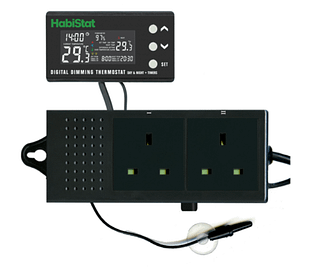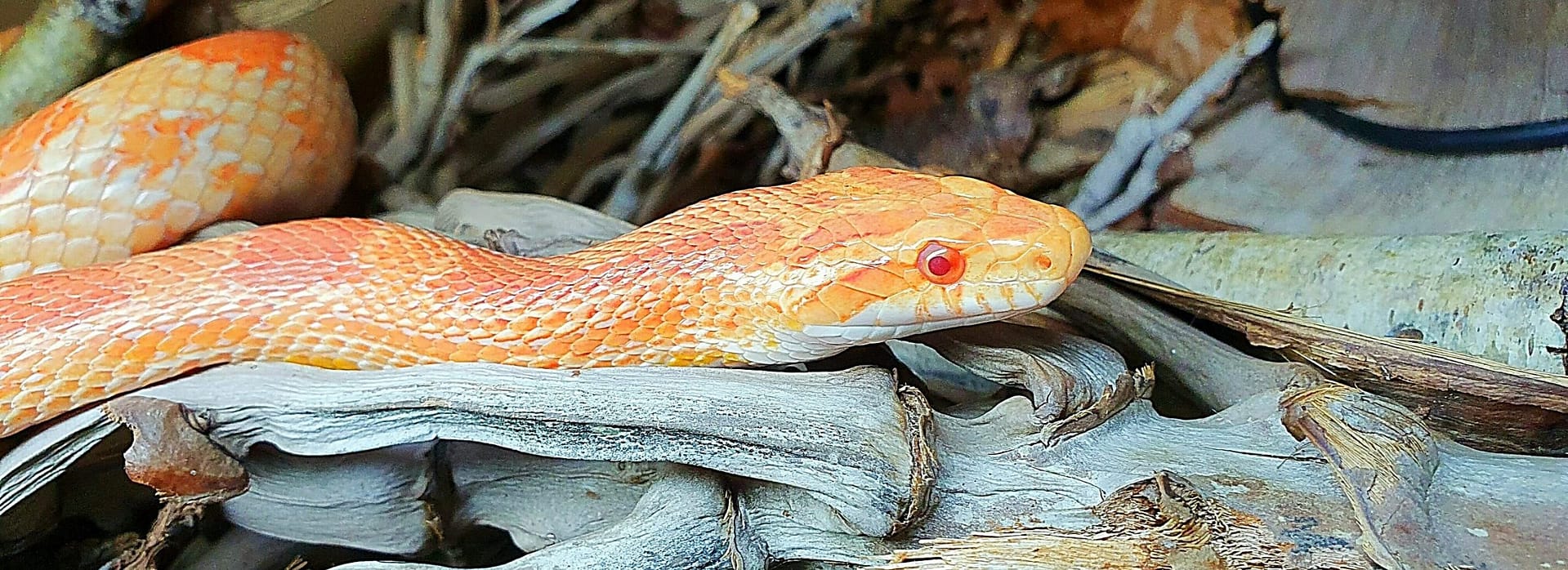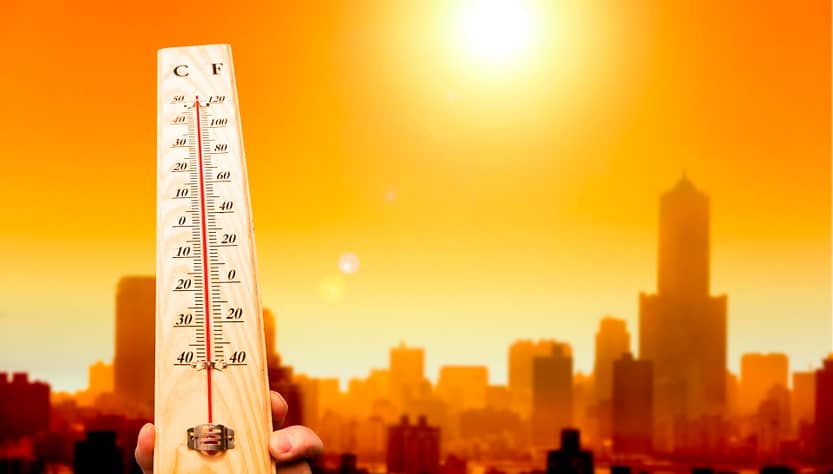The Importance of using a Thermostat
Using the relevant thermostat for your heat source is the one of the most important parts of your enclosure husbandry management, allowing for effective and safe control of the temperatures within.
By placing the Thermostat probe/sensor in the basking/hot zone of your enclosure you can accurately replicate the naturally required heat/temperature conditions of your chosen species – being cold-blooded, reptiles cannot regulate their own temperatures without an external heat source, so controlling this is vital for your reptile’s wellbeing.

Most keepers won’t be around their enclosures all-day, every day – this is where using the appropriate thermostat takes away any worry about enclosure heat-source management. No need to constantly change wattages of your heat source to try and maintain safe temperatures, the thermostat will keep things in check.
The thermostat will keep enclosure temperatures safe and stable by reducing the power to the heat source thus reducing the internal temperatures if they go above what you have set. It will then increase the power to the heat source which will increase the temperature when the thermostat probe/sensor detects it’s safe to do so – this will maintain the temperature you have set on the thermostat.
Not only that, but this will save on the running costs of your chosen heat source by regulating its watt usage to lower and higher the temperatures as needed, as opposed to a dangerously working at a constant 100% capacity.
Regardless of your chosen heat source, using a suitable thermostat is always going to be the best practice for animal safety and wellbeing.
Without the use of a thermostat, the risk of the enclosure overheating drastically increases which seriously endangers the risk to health of the animal(s) within.
An example scenario without the use of a thermostat could be – on your enclosures initial set-up you have the perfect temperatures for your chosen species, and the animal is happily getting on with its daily business – but then a hot day happens, much warmer than previous days/weeks. With most UK homes not having the luxury of Air-Conditioning not only means that the ambient temperature will increase within the room where your enclosure is located, but the enclosures temperature will rise too – and with that, the heat source you are using will still be working at its 100% capacity, which will continually increase the temperatures within your animal’s enclosure.
The result will be a danger to life of your animal due to the raising temperatures its being unwillingly exposed too, as even an enclosure dedicated cool area will soon succumb to the heat giving your animal no cool place to escape.
The flipside of this is also a danger –

You experience some much colder days, and your animal is spending its time around its heat source all-day as the heat source is not reaching the species required temperatures, and the animal is struggling to thermoregulate its body temperature effectively which could lead to undigested food and other health problems, this is despite the heat source running at its maximum capacity.
Normally you would swap out the heat source for a higher wattage equivalent which naturally gets hotter and allow your thermostat to regulate the temperature automatically and safely as needed.
But without that thermostat, the issue again can’t be controlled or regulated leaving the animal basking for extended periods trying it’s hardest to reach its needed core body temperature, but unable to do so, leaving it under energised.
An under energised reptile over an extended period will become lethargic, not eat, and more than likely succumb to illness.
If you find yourself without a Thermostat.
Now, I get asked a lot on how to maintain the temperatures within an enclosure as said persons thermostat is broken, or they are waiting on getting one.
The below are just example things to do while you wait on the your new stat.
So, If you are indeed in the unfortunate position where you find yourself without a thermostat for whatever the reason, leaving you waiting for a new one to arrive, or a fault to be repaired, you are now without this vital piece of equipment for the control of heat within your animal’s enclosure.
But there are a few of things you can do to minimise the risk of your animal’s enclosure overheating.

Caution
Again….The below are ways to minimise risk only, they do not eliminate the risk. There are NO excuses,
Also, the below suggestions are under the assumption that the animal is otherwise deemed health via regular Veterinary health checks. If your animal has underlying health issues, please consult your exotic vet before resulting to any of these suggestions.
It’s also under the assumption that you will only be without a suitable thermostat for a short period of time, and are able to regularly monitor temperatures, actioning any changes required.
Use a lower wattage heat source – Whatever your enclosures heating method, using a much lower wattage means the maximum temperature the heat source can reach should be lower.
This will reduce the risk of overheating within the enclosure, but certainly not eliminate it.
Turn off the heat source – If the temperatures in the enclosure are in fact not stable enough and a cause for concern regarding overheating, the only real solution is to turn off the heat source altogether.
This may have you turning the heat source on/off multiple times throughout the day to have some temperature stability. Of course, this isn’t ideal and could stress the animal, more so if it’s a light emitting heat source you are constantly switching on and off.
Additional lighting – Additional lighting such as Plant Growth High Output 6200k LED’s can produce a little heat, but it’s unlikely the heat produced would be any cause for any concern (although the effect on a smaller enclosure could be more significant).
These additional LED lights are fine to keep on for the benefit of the animal’s circadian rhythm, unless you feel they need to be off.
Unplugging these LED’s for the short period you’ll be without your thermostat should not have any adverse effects on the animal or plants within.
Take more regular temperature readings – Without the failsafe of your thermostat you will need to take more regular readings of the temperatures in the enclosure via a digital thermometer. Concentrate on the area where the main heat source is situated – for example, the basking zone under the heat bulb.
This will allow you to turn the heat source on and off throughout the day to help stabilise temperatures – although this can have a downside if the heat source is light emitting – this being turned on/off on an overly regular basis could cause stress to the animal.
If ever in doubt, turn off all heat – If you are not able to maintain a stable and safe temperature without that thermostat, despite trying the above methods, then you will probably have little choice but to turn off the heat source until you get your new/replacement Thermostat.
No heat source for several days is unlikely to cause issues regarding the enclosed animal when they are left at room temperature (based on the above-mentioned assumptions). Most animals would sleep more under such conditions.
It can be a good idea not to feed the animal during this period of zero heat due to their optimal basking temperature is not being reached. Without the species having their optimal basking zone temperatures, they will not be able to digest food as effectively, which could cause digestive issues.
If you insist on feeding, then feed a minimal amount until you have a thermostat protection back inside the enclosure.
To Conclude….
Honestly, Thermostat’s are available worldwide, with popular suppliers being the likes of HabiStat and Microclimate here in the UK (and Australia), and Spyder Robotics is the US.
There is NO excuse not to have a thermostat.
– Pete
Useful Links:
Award winning Published author of Herpetoculture.
Featuring articles on many species within,
Practical Reptile Keeping magazine (some linked on site as .pdf files)
Canadian Hobbyist magazine
Reptiles magazine
Also, Reptile/Amphibian blog article writer and reptile specialist for;
Exotic Direct (links on this site)
Reptile Apartment
Public talker at Reptile meetings, for various organisations.
Founder of several huge Reptile and Amphibian related Facebook groups (links on this site)
Reptile Reports – “Lizard Personality of the year” 2016 & 2017

